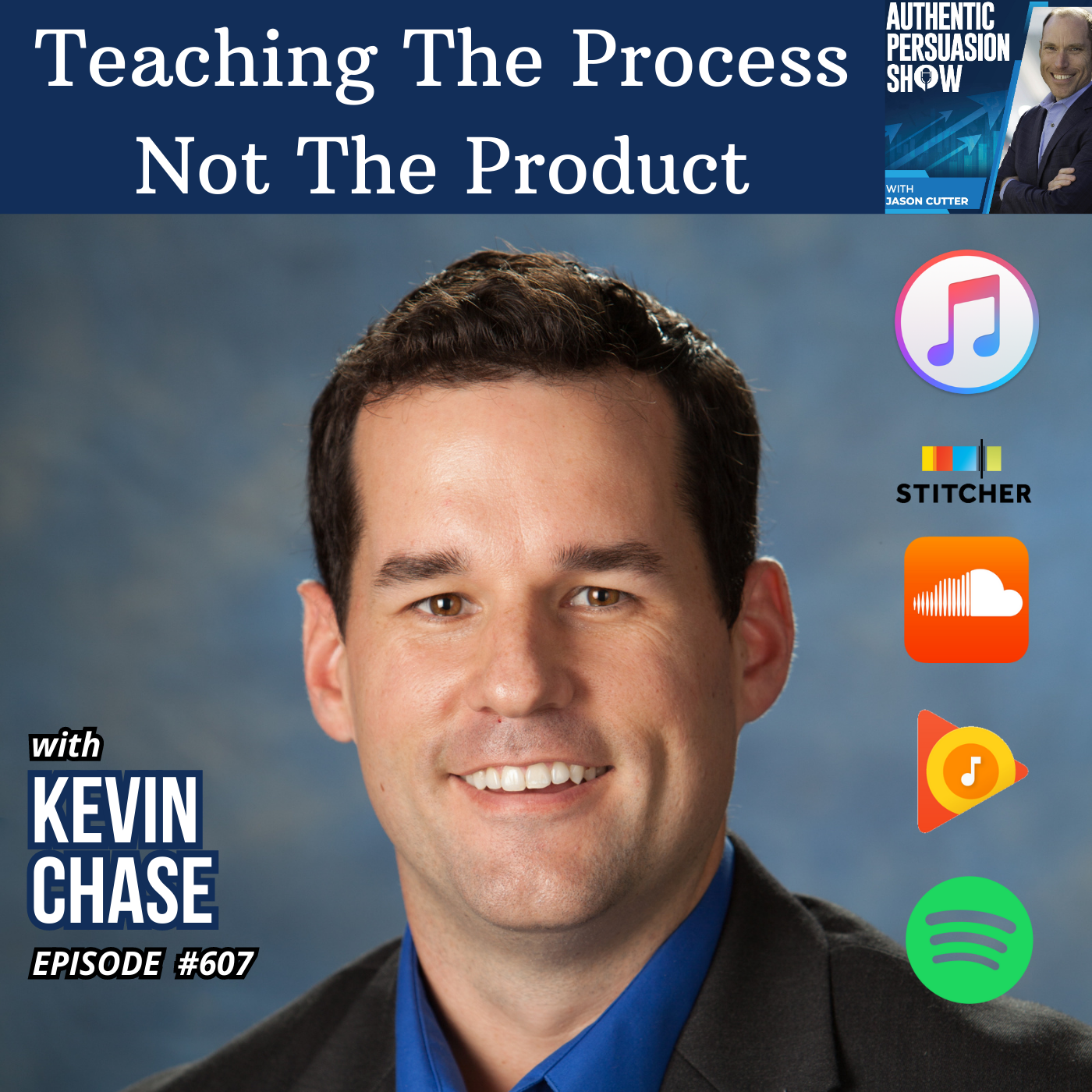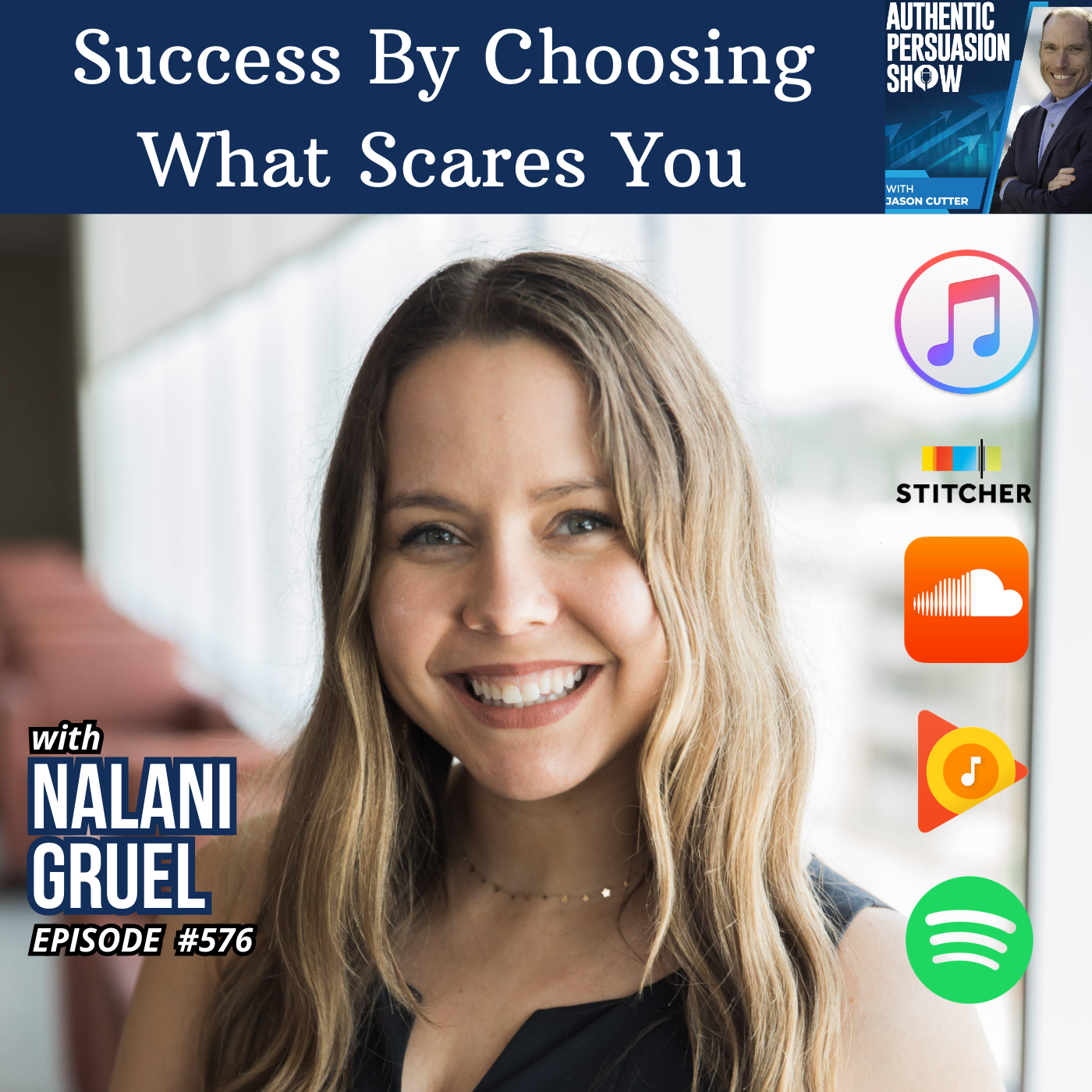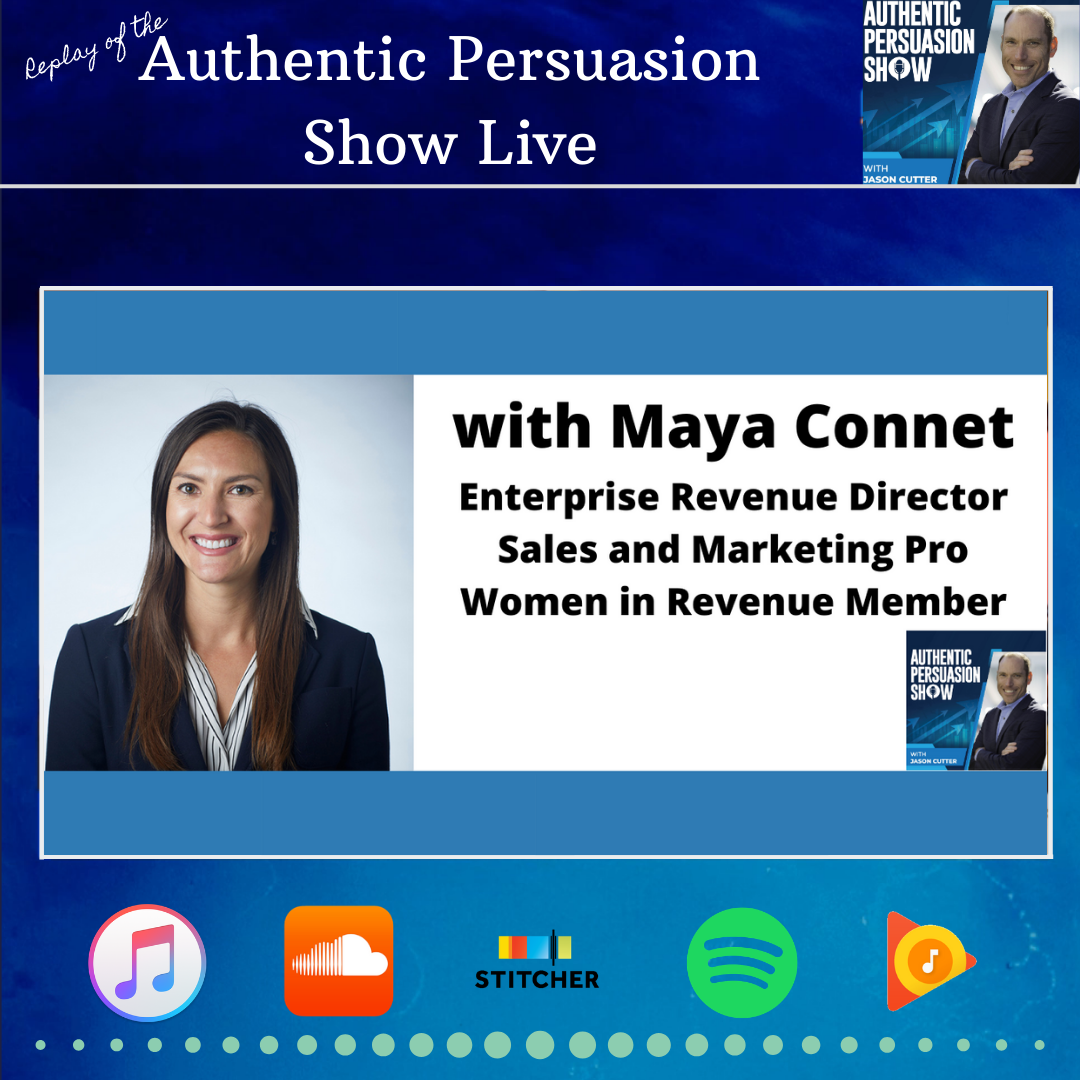Episode Transcript
Jason: Welcome back to the conversation that I'm having with Christine Bottagaro. This is part two. If you didn't listen, make sure to check out part one from. Yesterday, and let's just keep on rolling with the conversation that we're having around CRO, marketing, salespeople, just a whole, everything that falls under revenue ops.
We just keep on rolling with our conversation.
Christine: Let's look outside in. How are we presenting ourselves to our buyers, to our prospects, to our existing customers? And is that consistent? Because then you're setting up your sales team for a really difficult road. If they have to undo some of the learning that somebody's gotten from the website or from another conversation.
That's a hard thing to hand to a sales rep.
Jason: Yeah. And if you're, I'm just thinking, because essentially what you're talking about also is in terms of like mystery shop or secret shop, or just going through that customer experience from the beginning to the end. Which is easy for, let's say, retail, for transactional based things, for, like, restaurants.
Okay, well, let me just go eat at a restaurant or at my restaurant and see what that's like and go through that experience. It's different when you're selling something that has, like, a long sales cycle, and then there's a lot of customer involvement, account management, onboarding. That one's tough to run through from the customer's perspective, objectively, which I know that's where a lot of times I'll work with companies and do that.
Like I'll be a secret shopper, if you will, and then report to them, like, here's what my experience was. Here's what it felt like to go through the process. Cause I'm not in the forest, right? Like I can see it, but that's such a good point. I mean, what is the experience like? Because I know enough, especially engineers.
Engineers, marketing people, where they build it like they think it should run and sometimes they lose sight on the end user. Yeah, absolutely.
Christine: I'm in software and it's B2B software sales, which is a longer cycle and all kinds of, you know, but one of the key things is knowing that there are a multitude of people in any buying decision used to be 5.
4 and now it's between 8 and 10. Each of those people are going out and learning on their own. And between the two of us, we probably look at APIs differently. So how do we rationalize that? How do we help our buyers understand and rationalize and feel confident about the decision that they're going to make?
And so that's a big theme. And it's actually comes out of Gartner's CEB group, which is Challenger Group, Brett Adamson. And they talk about buyer enablement. to build buying confidence. So how can I make sure that you Jason feel really comfortable and confident advocating for my solution? It's because I've given you the information and we've been consistent in our storyline from website through to rep to tech support, right?
So that I think is a really critical piece in any business is building up that buyer confidence.
Jason: And the big thing, and this is where. It's easy to identify in a direct to consumer space, which is that people are always afraid of something, right? Everyone always has a fear of something. And in a buying position, it's a fear of change generally, or fear of making a mistake.
And so that's easy on the consumer side, right? It's why a lot of people stick to their same brand of. paper towels. They don't even want to change. And that's miniscule in terms of life, but still it's their safety in the comfort zone. And then you get into a business to business landscape and that person really doesn't want to make a mistake or look bad or pick wrong.
And their whole career could be on the line. And so it's about making them feel safe. I mean, at the end of it all, it's like, okay, this is a good decision. It solves your specific goals or needs or problems. And it's the safe thing to do. And with a trusted partner,
Christine: yeah, there's a horrifying statistic that if we're working with one buyer, that buyers absolutely believing that our solution is the right one, less than 50 percent of those people will advocate to their peers.
So that to your point exactly, there's so much risk in me making a mistake. There's so much social capital that if I backed a decision, it backs and it ends up being a bad one. I will not walk down the hall and go, you know what, Jason, this is really what we need to do. So think about how that plays out in the buying cycle.
And then how do you address that? And there are ways to do it in that surround education and making sure that all the different stakeholders have information that they need. And again, but staying true. And being authentic around the problems that you solved and the value that you bring. So there are ways to do it.
But so often we're like, Oh, here's our primary target buyer. And everything is only that one person. Well, that person has to talk to maybe seven other people.
Jason: And then it gets into the really fun, interesting parts. which is personality and behavior types, right? Like if you subscribe to something like disc or Myers Briggs and that line and that 50 percent number you're saying how they're advocating.
If you were to literally look at disc and I use something very similar on my side that I train on and coach people on, there's the side that's going to be confrontational and not confrontational. There's the people who are going to, they just want to stick to what they know and they're analytical. And the other side, that's just.
outgoing and they'll just promote whatever. And you have to understand that and deal with everybody differently that you're talking to, right? It's not one size fits all at that level.
Christine: Yeah. And that's where actually I'd love to toss a question to you because I want to learn is you have to present a little differently to the, your different stakeholders, right?
Like I would talk to a marketing person differently than I would to somebody in it, you're in sales, whatever. But how do you stay true? How do you Stay authentic to you as a person and how do you bring maybe a different flavor of your selling profile to all the different audiences that you have?
Because I think that's part of it is I'm always disturbed when there's a rep who's like, Hey, that guy or that gal. And then in meetings they're all buttoned up and I'm like, who is this person? Why are you looking different to me now? So I'm curious as to your take on how do you keep that core of authenticity, but then still understanding your audience.
Jason: I think part of it is, and I've embraced this a long time ago. I'm pretty terrible at playing politics and games and acting and pretending. And then I gave up on trying to and realizing that was actually powerful for me. So. The meetings and it's kind of like you see online, you know, treat the gender like you would the CEO.
I'm that same person. I'm that same way. Sales business, walking around the halls. Like I treat everybody the same and value everyone the same. So that makes it easy for me internally. It's just like, that's the authentic piece. And then really the fundamental strategy, if you will, behind your question. Is that I always make it about the other person and always focused on what they need and want or what their goals are or what keeps them up at night at 2 a.m. or in your business to business scenario, what it is, everyone has a boss.
And so what is it that they are either worried about? That their boss could ask them at any moment that they may or may not be ready for or what it is that they want to present to their boss or impress their boss with whoever that is right CEO has a board they've got public maybe they have shareholders like there's always a boss and so it's all about understanding what that person is going after and if I can help them and then it's speaking to them at that level and making it about them.
Christine: Yeah, and what I heard there was a real trusted partnership and also that you're going to make sure that person looks good, is knowledgeable and confident in all the things they have to say. So that's a really powerful thing to have a vendor be on your side and support you in that way.
Jason: Yeah, and I don't firmly believe that it's a good fit.
I mean, I've never sold anything nor supported anyone who sells something where everyone wins. If you think you could have a hundred percent close ratio of everyone you talk to because everyone should buy your thing I'm definitely not your guy because that's something totally different. Not a consultative type sale.
So in sales where there is a yes or a no and a clear, this is a fit or a not fit. Then it's easy because once it's a fit, then it's all about how do I help them? If it's not a fit, it's an easy. Yeah. It's interesting.
Christine: You bring up close rates. Cause that's something that I'm pretty analytical by nature. And on the marketing side, I was always watching conversions and all the good stuff that happens.
And I carried a number. And that I think made me get even closer to the sales side is like I can't just sit here and be like, well, we did our job. It's up to you. There's no room for that. I wanted to see that the table that had accountability and responsibility, but close rates to me, there are times when they would get too high.
And here's the, it's sort of a, maybe a contrarian approach, but I'd be like. Then you're not getting enough at bats because at some point if you're only getting the exact people that you know You're gonna win or the likelihood is higher. Are you leaving money on the table? Are there opportunities that you should maybe be engaged in?
So it was kind of funny because there were some win rates that started creeping up and like that's good But there comes a point where I want to see that be a little bit more natural and map to some of the other products we had. It made me think we weren't having enough conversations. We should be losing more because I want to talk to them.
So I'd be curious to your take on that.
Jason: I totally agree. And what I've seen in various scenarios is where the salesperson can kind of control. Or annotate which leads would qualify to be even considered towards the closing percentage. And so they're quickly discounting and throwing away and disqualifying leads out of the system so they don't count.
So you hand them 10 and magically five aren't even in the system and then they close two out of the five and then they look like a hero. But there's those other five, like what happened to them and were they really bad leads? And so that's part of it. I mean, I totally agree. The other part and where it makes me think too, is I would also, if If that isn't the case, I support a high closing rate as long as the cancel rate and those issues on the back end aren't high also.
Because what I also see on the flip side of that is when a closing percentage is really high, it's usually lots of push, lots of pressure, not talking about the negatives, not setting the right expectations, not making sure it's a square peg in a square hole. And in the do whatever it takes to close the deal kind of framework and then they become a customer and it's just a nightmare or they cancel or there's lots of service tickets because of it.
It's just not a good fit. And so generally, if I see a high closing rate, I'll see a high cancellation rate as well.
Christine: That's a really fair thing. You have to look at downstream. Yes, I'll buy because for whatever reason, but then am I going to use it? And then am I going to churn at the end of that year at renewal?
Yeah, that's interesting.
Jason: And then on the flip side of that, what I see a lot on the other end, because I deal with people who I label as order takers, they have a really low closing or a cancel percentage and a really low, all of that complaints or challenges. And they're really proud of that, but their closing ratio is really low because they're essentially just taking all the lay downs.
All the easy deals where someone says, I want what you have. How much will this cost me? Here's my credit card. And there's no sales effort, no persuasion. And so there's no cancels.
Christine: Yeah, that's fair. Those are all good numbers to watch and they're so correlated. Another thing is what I learned along the way is comp plans and making sure that you're aligned in terms of all of that because you want to make sure that you're rewarding the behavior that the organization wants.
If it's new customer acquisition, if it's retention, if it's whatever it is, and that has to be reflected. And I've seen it play out where your comp plans are set and then it's, we have these business goals and they weren't correlated. And all of a sudden you see somebody just working one account. Well, that's because they can make their quote on that renewal.
And then we're looking for organic growth and it doesn't happen. We're like, I wonder why. Right? So all of those things, and that's why, again, it led me closer and closer to the edge of sales to say, how does this big machine work from quotas and comp through the marketing engine through to closed one and retention?
Jason: That's it for part two, make sure to come back tomorrow for part three. And if you haven't yet subscribed to the show, rate it. Leave a review, share with anybody, you know, in sales, especially somebody who's in a CRO management and or ownership position is thinking about getting a CRO and putting that position in place, please share this with them so that we can help bridge the gap and bridge the teams together from sales and marketing instead of having the division.
And that's it for this one. I'll see you tomorrow. That's it for another episode of the Sales Experience Podcast. Thank you so much for listening. If you find yourself on iTunes, can you leave the show a rating and a review? It helps other salespeople and sales leaders find the show. And please subscribe to the show and share episodes you find valuable with anyone you know in sales.
Help me on my mission of changing the way sales is done. And if you're ready to work together, go to JasonCutter. com. Again, that's JasonCutter. com. To find out how I can help you or your company create scalable sales success. I will see you on the next sales experience podcast episode, and keep in mind that everything in life is sales and people will remember the experience you gave them.
![[E282] Leading As A CRO, with Christine Bottagaro (Part 2)](https://episodes.castos.com/salesexperiencepodcast/images/Season-3-TSEP-Covers-1.png)


